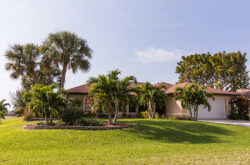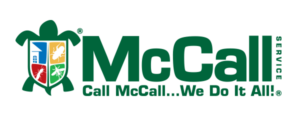Drywood termites seek dry wood for a food source, destroying homes in the process. These termites create their colonies in wood, needing little to no moisture to survive. Drywood termites can be devasting to homes by excavating wood and cause the risk of damage to home’s structural integrity. If you’ve been hit with a drywood termite infestation, there are two options to consider eliminating them: tent fumigation and no-tent treatments. Read more as we break down these two types of termite treatments!
Tent Termite Treatments
When drywood termites infest, they can be found in multiple areas of your home, including your attic, walls, facia, and more! Tent fumigation can be one of the best options when this occurs. A termite tent fumigation service is performed by skilled and expert termite professionals who carefully tent your home, so the termite elimination products are contained inside. Once the product is inside the home, it can spread throughout the entire house to remove the termite threat. Depending on the size of your home and weather conditions, your pest control professional will determine how much product is needed to treat the home. It’s important to note that you must vacate the property when tent fumigation treatments are performed, which usually last 24 to 72 hours.
No-Tent Termite Treatments
If you would rather avoid leaving your home, the no-tent fumigation treatment could be beneficial to you. This treatment does not need a tent to remove termites; instead your termite control professional will inject an advanced termite non-repellent product into drywood termite galleries to eliminate the termites at hand. This termite treatment option works immediately to stop the spread of termite. Once these pests come in contact with the product, it spreads throughout the entire colony, reaching the queen, and eliminates the colony.
Drywood Termite Signs
Having a termite treatment can be devasting, so it’s important to understand drywood termite activity signs so you can choose the termite treatment that best suits your home to eliminate them as soon as possible. Common drywood termite signs include:
- Holes or Wood Damage: Termites that have nested inside your home will leave small, unnoticeable holes found on the interior or exterior walls. They also leave behind warped wood, window/door frames, and baseboards.
- Termite Droppings: Drywood termites leave frass and are visible if an active colony has infested your home.
- Discarded Wings: Swarmers will leave lose their wings after they mate; if you find these around your windows or doors, it’s a sign there’s an active termite colony nearby.
If you suspect a drywood termite infestation or are interested in tent and no-tent fumigation services, reach out to your local pest control company for more information!



